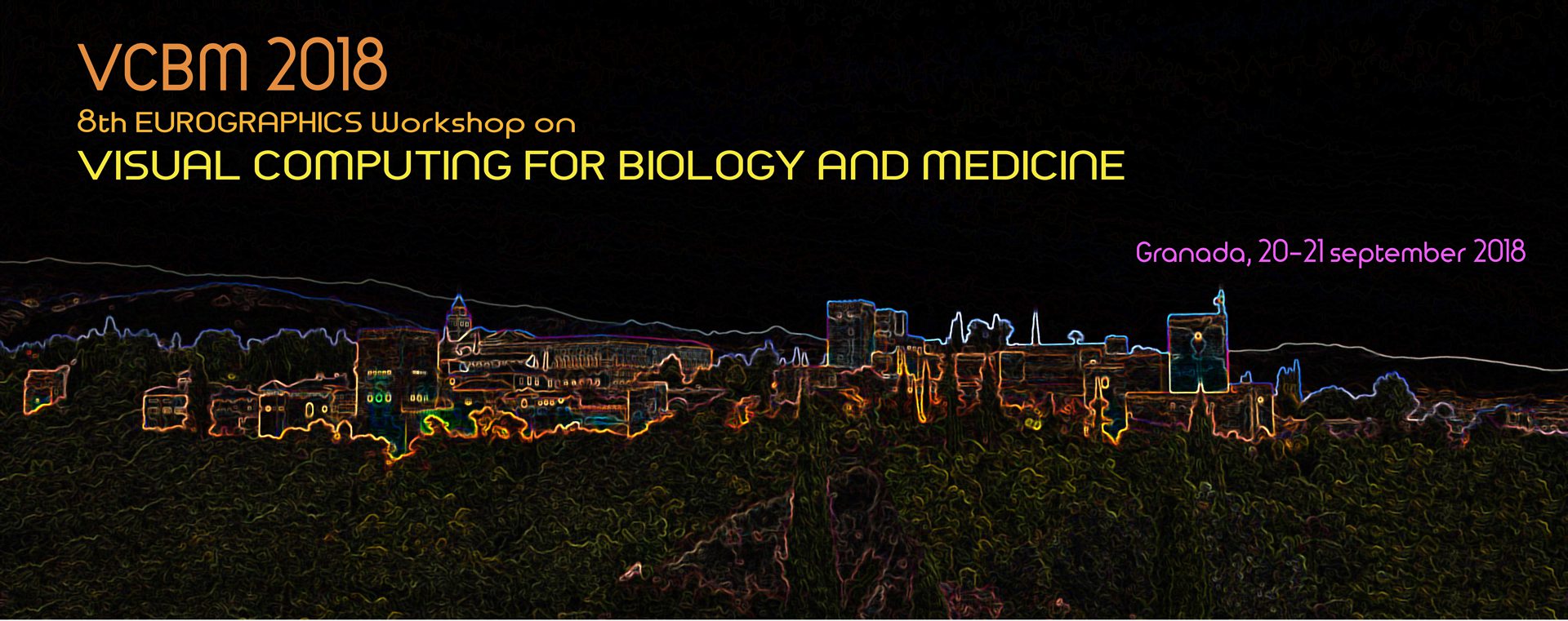In Sept. 2018, the annual Eurographics Workshop on Visual Computing for Biology and Medicine (EG VCBM) will take place in the UNESCO World Heritage city of Granada, co-located with the 21st International Conference on Medical Image Computing and Computer Assisted Intervention (MICCAI).
EG VCBM addresses the state of the art in visual computing research with a strong focus on applications in biology and medicine. It provides an interdisciplinary forum for experts (researchers and practitioners) from visualization, visual analytics, computer graphics, image processing, computer vision, human computer interfaces as well as experts from biology and medicine, jointly working on next generation visual computing solutions for medicine, healthcare and the biotechnology sector.
Topics of works suitable at VCBM include, but are not limited to:
- Visual computing solutions for medical applications like radiology, surgery, pathology, cardiology, nephrology, neurology, etc., including medical education
- Visual computing solutions for applications that support biomedical research in systems biology, *omics research, molecular pathology, neuroanatomy, biomedical imaging, etc.
- Operation room of the future including the uses of virtual reality and augmented reality in medical applications.
- Visualization approaches for data from new or challenging imaging modalities including real-time imaging (e.g., ultrasound)
- Visual computing solutions in the context of the virtual physiological human. Medical simulation and visual computing solutions that support new approaches in computational medicine.
- Visual analytics solutions for data coming from epidemiological studies, like population studies.
- Survey papers on visual computing in biology and medicine
Researchers also present methods that provide relevant advances on Medicine and Biology regarding:
- Visualization and analysis of all kinds of biomedical data (signals and images)
- Visualization, mining and analysis of biomedical data collections, including cohort data
- Information visualization of medical data sets, e.g., electronic health records
- Computer models of biomechanical, physiological, and biochemical functions in living systems
- Fusion, analysis and visualization of heterogeneous and/or multi-source data
- Multi-scale methods and data structures for large data
- Interaction and design of visual computing workflows in medicine and biology
- Data tracking and registration
- Data reconstruction and geometry extraction
- Real time rendering and interaction with anatomy models

